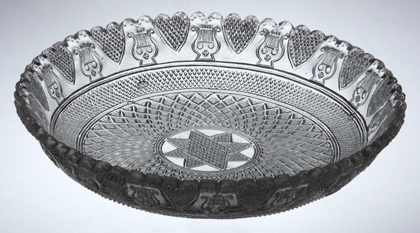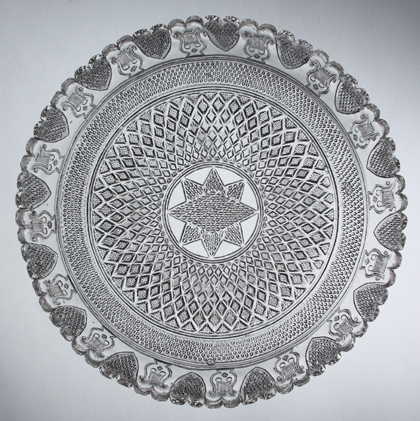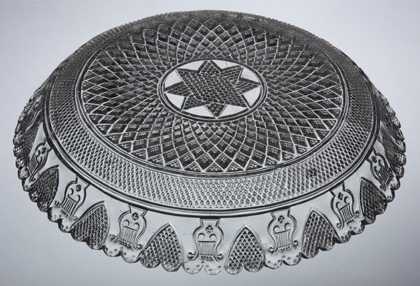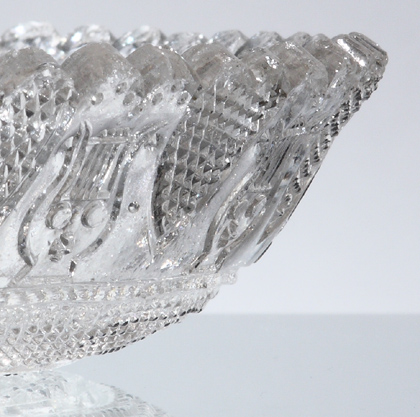Rapid fire invention
The fashionable heart and lyre border and wide field of strawberry diamonds conceal the experimental nature of this rare example of early American pressing.

Machine pressing was America's first great contribution to glass technology, providing a radical new method for shaping and decorating glass. In the process it gradually reduced the role of blowers and cutters in the design and decoration of glass, transfering skill and design to a small and influential group of designers and mold makers. It laid the foundation for today's glass industry in which the vast majority of products are mass produced and inexpensive yet decorative.
This 9" bowl can be dated to a very specific moment, circa 1830, when Deming Jarves experimented with a new technique in an attempt to make pressing more economical.

Molds were expensive, not least due to the shear intricacy of a design such as this. In the case of the recently invented mold blown glass, it was possible to continue shaping the patterned bubble after it was removed from the mold. However, how could this be done in pressing?
Jarves's innovation was a two step process. First, a flat sheet of glass with a pattern was pressed. Next the sheet was reshaped by being slumped into or over an unpatterned form. By using a variety of forms, bowls of a variety of depths, profiles and diameters could be created from the sheets from a single mold.

That this bowl was shaped in this way is clear for several reasons. Firstly, there is no obvious rim for the base of the bowl—instead, the bowl curves gently round to its border. Secondly, the scallops at the edge of the bowl—including the lobes of the hearts—are perpendicular to the side of the bowl, as below.

The scallops started out as vertical, having been shaped as if by a cookie-cutter at the edge of the flat pressed sheet of glass. Their angle changed as the edge of the bowl was slumped over the form, remaining at a right angle to the side of the bowl.
Like any new invention, Jarves' method underwent several rounds of improvement. When the sheets refused to fall fully over the forms, they were assisted by a plain, unpatterned plunger. When a batch of bowls all refused to sit flat, due to an incompletely slumped, domed foot, the solution was to place a button into the bottom of the form to press up the center.
Each of the short lived techniques of early American pressing was a step towards the ultimate perfection of the process, and a sign of a mechanical genius at work. The sheer rate of innovation in the first ten years of pressing is breathtaking (see, for example, this and this). This makes early American pressed glass a true rarity, a category of collectable objects that blends esthetics with readily visible invention.

